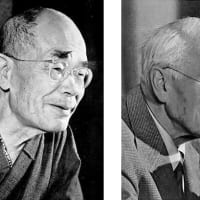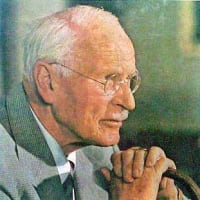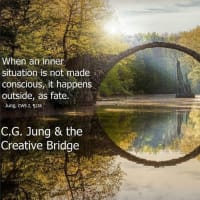
A
今日、マインドフルネスには2つの定義があると言われています。
1つは、アクティブ・マインドフルネスと呼ばれるもので、人が意図的に、努力して、考えが生じたときに、その考えに気づくようにしようとするものです。
もう1つのバージョンは、最初のバージョンとは異なり、意図的で意識的な努力を必要とせず、その状態を維持することが、人の在り方に本質的かつ恒常的に組み込まれているものです。この定義は、「エフォートレス・マインドフルネス」(「楽なマインドフルネス」)と呼ばれています。
"なぜ、私たちは最大の自然の恵みを発見していないのか?
と疑問に思うかもしれません。努力しないマインドフルネスの源である「目覚めた意識」がすでにここにあるのなら、なぜ私はまだそれを発見していないのだろう?これは良い質問です。発見できない理由の1つは、西洋の心理学的な地図のほとんどに「目覚めた意識」が載っていないからです。苦しみから解放されたいと願って努力してきた多くの人々が、「目覚めた意識」を見逃してきました。それは、願望やコミットメントがなかったからではなく、何を探せばいいのか、どこを探せばいいのかがわからなかったからです。
チベット仏教の伝統であるシャンパ・カギュは、私たちが自然に「覚醒した意識」を発見できない理由を4つ挙げていますが、これはとても参考になります。
1,覚醒した意識はとても近くにあって、見えない。
2,覚醒した意識はとても繊細で、あなたはそれを理解することができません。
3,覚醒した意識はとてもシンプルで、あなたはそれを信じることができません。
4,覚醒した意識はとても良いので、あなたはそれを受け入れることができません。
これらのそれぞれを詳しく見てみましょう。
"1. "So close that you can't see it "(見えないほどの近さ )とは、覚醒した意識が見えないところに隠れているということです。それは私たちの呼吸よりも近いところにあります。覚醒した意識は "それ "ではないので、私たちは覚醒した意識を見つけることができません。覚醒した意識は、見たり聞いたり触ったり嗅いだり味わったりすることのできる物体でも物でもありません。思考、感情、イメージ、信念、感情、そしてエネルギーでもありません。覚醒した意識は、目に見えない形で私たちの中に備わっており、私たちがどこから見ているのかを示しています。私たちは、「目覚めた意識」が自分自身を発見できるように、「目覚めた意識」に内観させたり、振り向かせたり、後ろに休ませたりする方法を学ぶ必要があります。そうすれば、目覚めた意識が心の源となり、そこから知覚することができるようになるのです。
2.“So subtle that you can’t understand it” (理解できないほど微妙)とは、思考する心では「目覚めた意識」を知ることができないということです。五感も、思考の心も、自我も、意志も、想像力も、注意も、「目覚めた意識」を知ることはできません。目が音を聞くことができないように、思考や注意では「目覚めた意識」を知ることはできないのです。覚醒した意識だけが、覚醒した意識を知ることができるのです。覚醒した意識は経験的なものです。必要に応じて思考を利用することはできますが、それは思考を超えた、あるいは思考に先立つ、より直接的な知の方法です。マインドフル・グリムスを行う中で発見するのは、覚醒した意識を思考するマインドから切り離し、概念的な知識を使わずに覚醒した意識に直接知ってもらう方法です。
五感も、思考する心も、自我も、意志も、想像力も、注意も、「目覚めた意識」を知ることはできません。目が音を聞くことができないように、思考や注意では「目覚めた意識」を知ることはできないのです。覚醒した意識だけが、覚醒した意識を知ることができるのです。覚醒した意識は経験的なものです。必要に応じて思考を利用することはできますが、それは思考を超えた、あるいは思考に先立つ、より直接的な知の方法です。マインドフル・グリムスを行うことで発見できるのは、覚醒した意識を思考する心から切り離し、概念的な知識を使わずに覚醒した意識に直接知ってもらう方法です。
3. "So simple that you can't believe it "(信じられないほどシンプルで )というのは、一度発見してしまえば、覚醒した意識は自然であり、複雑ではないからです。難しいと思われるのは、発見されるまでは知られていないからです。スピリチュアルな花火を求めている人の多くは、「ハッ!」とするようなドラマがないことに驚きます。しかし、あなたは苦しみから解放され、心配の心配から解放され、恐怖の恐怖から解放され、怒りの怒りから解放されたと感じます。このシンプルさが、禅宗では覚醒した意識を "普通の心 "と呼ぶことが多い理由です。
4. "So good that you can't accept it"( 受け入れることができないほど良い)なぜなら、それを手に入れるために、獲得したり、発展させたり、善良である必要がなかったからである。自分が求めていた幸福感、無邪気さ、基本的な善良さが、本当の自分であることを信じるのは難しいことです。覚醒した意識は、自分が無価値であるとか、間違っているとか、悪いとか、愚かであるとか、愛されないといった、恥に基づいた感情や長年の思い込みよりも深いものです。それまで物や人、成果などに求めていた、本質的な安全感やサポートを感じ始めることができます。完璧にこなそうとしたり、いつか誰かにならなければならないというプレッシャーから解放され、不定形の未来に大丈夫だと思えるようになります。目覚めた意識が心の源であり、自分のアイデンティティの基盤であることを発見することは、人によっては喜びの涙を流すほど尊い感覚です。"いつもの自分に戻ることができるのです。
~抜粋 ロッホ・ケリー "The Way of Effortless Mindfulness."
J
"誰もが影を抱えており、それが個人の意識的な生活の中で具現化されていないほど、それはより黒く、より濃くなる」-カール・グスタフ・ユング
ユング心理療法では、真に完全で癒された人間になるためには、自分の影を完全に統合する必要があるという考え方をしています。影と向き合い、理解し、その秘密を解き明かし、そのエネルギーを再利用する必要があるのです。
A
It can be suggested that there are two definitions of Mindfulness in use today.
One version is what we might call Active Mindfulness where the person intentionally and with effort chooses to make the attempt to stay in awareness of thought as it arises.
The other version is different from the first whereas it doe not require intention and conscious effort to remain in that state as it has become inherently and constantly ingrained into one’s way of being. This definition is referred to as Effortless Mindfullness.
“Why We Haven’t Discovered Our Greatest Natural Gift
You might be asking: If awake awareness as the source of effortless mindfulness is already here, why haven’t I discovered it yet? This is a good question. One reason we don’t discover it is that we don’t have awake awareness on most of our Western psychological maps. Many people who have longed and strived to be free of suffering have missed awake awareness, not because they lacked desire or commitment but because they didn’t know what to look for or where to look.
The Shangpa Kagyu tradition of Tibetan Buddhism gives four insightful reasons we don’t naturally discover awake awareness, which I find quite helpful:
1.Awake awareness is so close to you can't see it.
2.Awake awareness is so subtle that you can't understand it.
3.Awake awareness is so simple that you can't believe it.
4.Awake awareness is so good that you can't accept it.
“1.“So close that you can’t see it” means that awake awareness is hidden in plain sight. It is closer than our own breath. We can’t find awake awareness because awake awareness is not an “it.” Awake awareness is neither an object nor thing that can be seen, heard, touched, smelled, or tasted. It isn’t a thought, emotion, image, belief, feeling, or even energy. Awake awareness is invisibly inherent within us and is where we’re looking from. We need to learn how to have awake awareness look within, turn around, or rest back, so that awake awareness can discover itself. Then, awake awareness is the source of mind from which we are able to perceive.
2.“So subtle that you can’t understand it” means we can’t know awake awareness with our thinking mind. Neither the five senses, the thinking mind, the ego, the will, the imagination, nor attention can know awake awareness. Just as the eye cannot hear sounds, thinking and attention cannot know awake awareness. Only awake awareness can know awake awareness. Awake awareness is experiential. It is a more direct way of knowing that is beyond thought or prior to thought, although it can utilize thought when needed. What you’ll discover as you do mindful glimpses is how to separate awake awareness from our thinking mind and have awake awareness know directly, without using conceptual knowing.
3.“So simple that you can’t believe it” because once it’s discovered, awake awareness is natural and not complex. The only thing that makes it seem difficult is that it’s unknown—until it’s discovered. Many people who are looking for spiritual fireworks are surprised when the “aha!” holds no drama. However, you feel free of suffering, free from worry about worry, free from fear of fear, and free from anger at anger. This simplicity is why, in Zen Buddhism, awake awareness is often called “ordinary mind.”
4.“So good that you can’t accept it” because you didn’t need to earn it, develop it, or be good enough to get it. It’s hard to believe that the well-being, innocence, and basic goodness that you’ve been looking for is who you truly are. Awake awareness is deeper than any shame-based feelings or long-held beliefs of being worthless, wrong, bad, stupid, or unlovable. You can begin to feel an inherent sense of safety and support that you had previously been looking for in things, people, and achievements. It relieves you of the pressure to try to do things perfectly or become somebody someday so that in the amorphous future you will be okay. Discovering awake awareness as the source of mind and the foundation of our identity is such a precious feeling that some people have tears of joy upon finally feeling it: you get to come home to who you have always been.”
~Excerpt From: Loch Kelly. “The Way of Effortless Mindfulness.”
J
“Everyone carries a shadow, and the less it is embodied in the individual’s conscious life, the blacker and denser it is.”— Carl Gustav Jung
The idea, in Jungian psychotherapy, is that to genuinely become a whole and healed person, you need to fully integrate your shadow. You need to meet it face to face, understand it, unlock its secrets, and reuse its energy.
A
マインドフルネスはユングのバイパスであるという主張をしているように聞こえます。
S
A
ヴィパッサナー・マインドフルネスの長い伝統においては、思考そのものが解消されることを伝えているのです。 このことは、臨床家の揺るぎない医学的な視点で訓練された病理や「問題」への焦点を超えて、その人の人生の持続的な創造性と成熟性の中で証明されます。
A
S
あなたの「マインドフルネス」は、別名REBTのようですね。
REBT(Rational Emotive Behavior Therapy)とは、1950年代にアルバート・エリスが考案した心理療法のひとつです。REBTの目的は、人々が不合理な信念を合理的な信念に変えるのを助けることです。信念を変えることはセラピーの真の仕事であり、セラピストがクライアントの不合理な信念に異議を唱えることで達成されます。
これを一歩進めて、すべての制限的な信念を排除し、代わりに真実を求めることを提案することもできます)。
https://www.youtube.com/watch?v=GCQSnuDpERA
理性的動機づけ行動療法(REBT)とは?
A
it sounds like you’re making the claim that mindfulness is Jungian Bypassing.
S
A
I am conveying the opposite..that in the long tradition of vipassana mindfulness, the dissolution of thinking itself occurs, yoga citta vritti nirodha...this is a matter of Surpassing not bypassing, and proves itself in the sustained creativity and maturity of the person's Life that can and often does exceed the clinician's unwavering medical gaze trained focus on pathologies and "issues" that proves Iatrogenic and unable to mentor client toward creative living that can at times exceed the level of the therapist...This is a Big Problem I have seen in my 50yrs clinical career...Iatrogenic pathology-centric trained clinicians...
A
S
It sounds like your “mindfulness” is aka, REBT.
Rational Emotive Behavior Therapy (REBT) is a form of psychotherapy which was created by Albert Ellis in the 1950s. The goal of REBT is to help people change their irrational beliefs into rational beliefs. Changing beliefs is the real work of therapy and is achieved by the therapist disputing the client’s irrational beliefs.
(it could be also suggested to take this a step further and eliminate all limiting beliefs and seek Truth instead.)
https://www.youtube.com/watch?v=GCQSnuDpERA
What is Rational Emotive Behavior Therapy (REBT)?
https://www.youtube.com/watch?v=GCQSnuDpERA
Jo
Mindfulness is an eastern practice that has been assimilated by the West. 🙁 In any case, "mindfulness" is an attitude and a state of mind that precedes the process of "shadow integration"



















